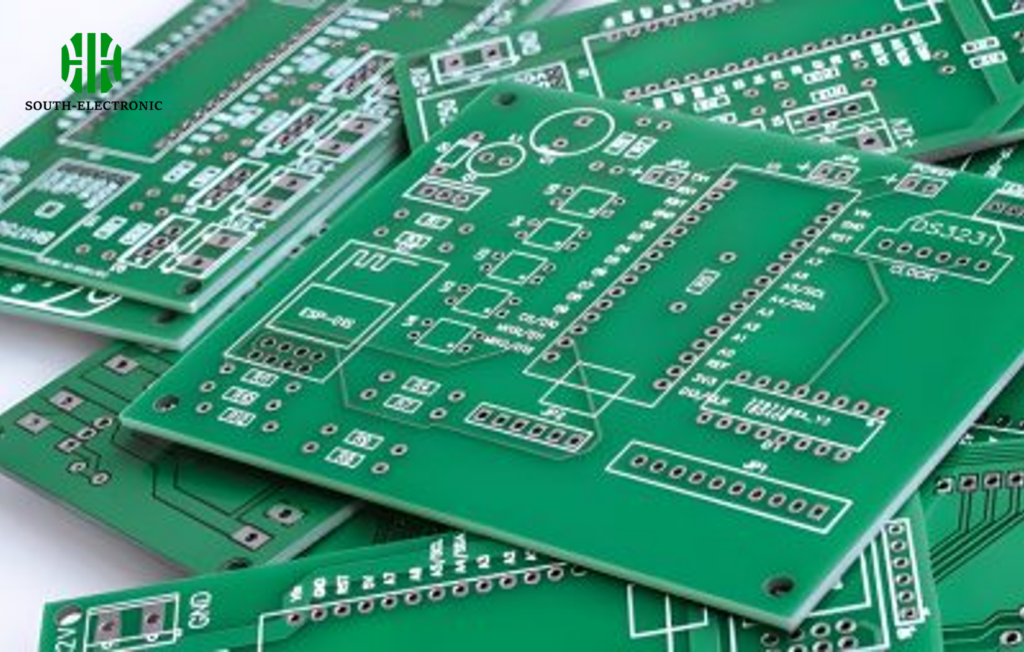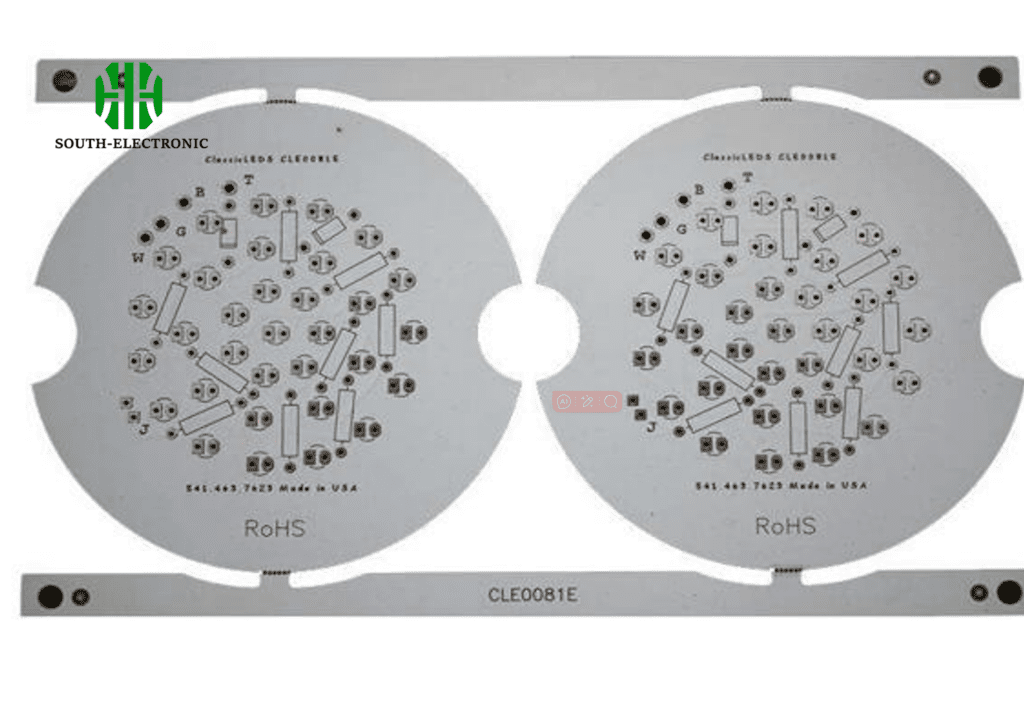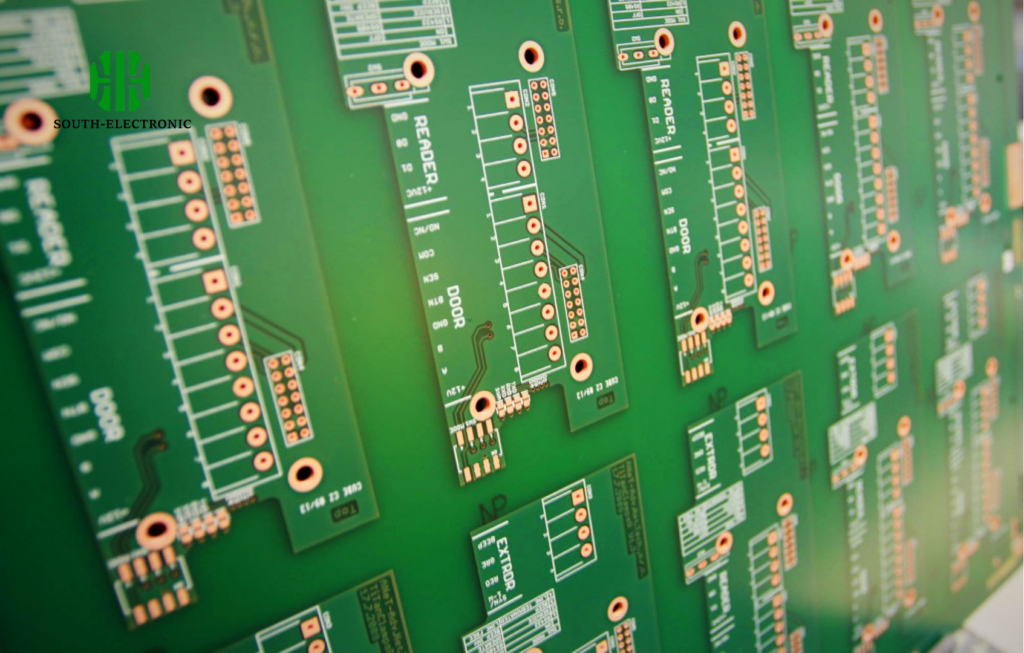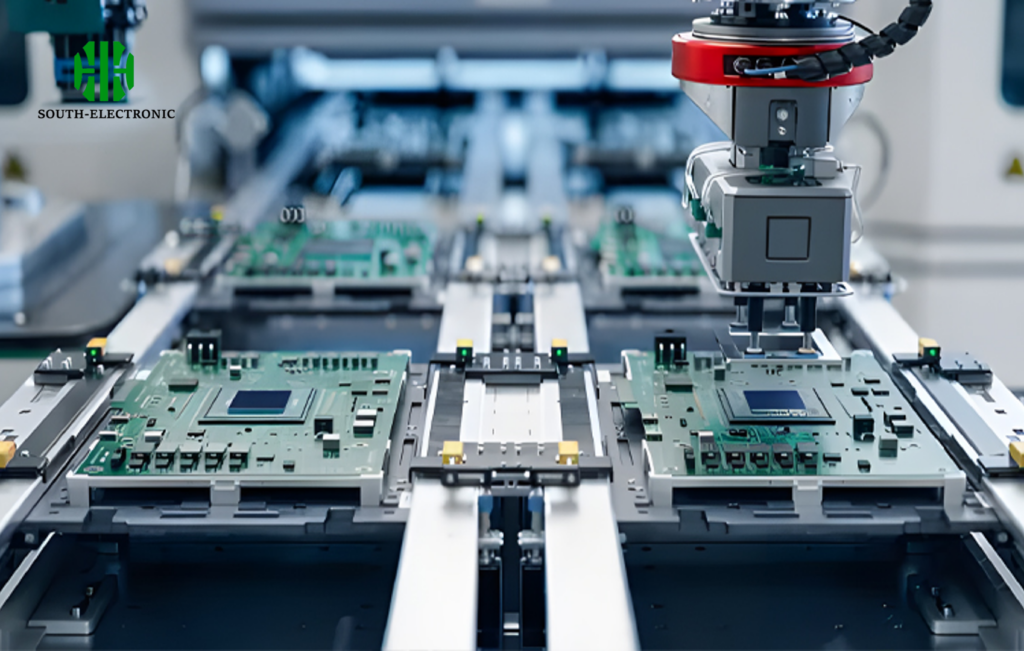What does PCB color mean?
PCB color generally refers to the color of the paint on the board, which is most visible when you pick it up. The color of the PCB surface is the color of the solder resist. PCB dye is a hardened resin. The main resin is colorless and nearly transparent. Green, like other colors, is a coloring agent.
Color is applied to PCBs using screen printing. PCB colors include green, black, blue, yellow, purple, red, and brown. Some manufacturers have also developed PCBs in various colors, such as white and pink.
Are there any differences between different PCB colors?
- Green PCBs
Green PCBs are the most popular color. Therefore, many people mistakenly believe that PCBs are green, or that they are mostly green. Green enhances PCB clarity because it creates a sharp contrast with white text, enhancing readability. Additionally, a green PCB surface treatment reflects less light, helping to reduce glare.

- White PCBs
White PCBs appear clean and sharp in a variety of environments and are becoming increasingly popular. However, they are still not the preferred choice because white PCBs can easily hide traces. However, white PCBs offer a particularly striking contrast against black silkscreen.

- Yellow PCBs
Yellow PCBs were once common, but are no longer as practical. Yellow PCBs can quickly meet varying needs for style, cleanliness, and visibility. However, yellow PCBs have one significant disadvantage: poor contrast with traces and silkscreen.
- Blue PCBs
Blue PCBs are considered thicker boards for labeling because they provide significant contrast with silkscreen. This PCB color isn’t as eye-catching as green, black, or white PCBs, but it is a top choice for PCB color because it offers an excellent aesthetic choice. Blue PCBs are particularly well-suited for LCD installations because they don’t create sharp contrasting edges or bright background colors.

- Red PCBs
Many PCB manufacturers are keen on using red PCBs due to its advantages. Red PCBs offer excellent visibility and clearly defined contrast between traces, planes, and clear areas. Silkscreen looks stunning against red PCBs.

- Black PCBs
Black PCBs are just as popular as white PCBs. Both PCB colors create low contrast, making it easy to mark important components. However, the main drawback of black and white PCBs is that certain details can be spotlighted and cast small shadows. This shadowing makes tracing difficult. Therefore, black PCBs are not suitable for various high-temperature applications because they may discolor the silkscreen. Furthermore, black PCBs, being a mixture of cobalt and carbon, may have poor conductivity.

Which process determines the PCB color?
Different colors do not affect how the PCB is manufactured. Copper is still applied on one or both sides, and as copper is added or removed, the PCB becomes smooth. The copper layer on the PCB is very thin, which is why the green color stands out so well.
This thin copper layer is eventually covered during the soldering process to prevent it from oxidizing. Solder mask does this, and in many cases, it is also the standard green color. In other colors, copper doesn’t show up clearly, making it difficult to see where the traces are.
After the traces are drawn, the components are placed. These need to be soldered in place according to the board diagram. Finally, with the components in place, the board is tested. If it works, it goes into production.
Most printed circuit boards are designed by engineers, and prototypes are produced before they go into production.
Why are most PCBs green now?
This is primarily because green solder mask is the most mature and simple, and green PCBs are also more environmentally friendly. In addition to green, PCB colors include white, yellow, red, blue, matte, and even chrysanthemum, purple, black, and bright green. White exists because we need it for lamps.
Other PCB colors are used primarily to distinguish different product samples. Throughout a company’s lifecycle, from R&D to product launch, the PCB’s various uses depend on the company. A lab PCB might be purple, a button PCB red, or a computer internal PCB black.
Here are a few reasons for choosing green PCBs:
- Glass Epoxy Material
Glass epoxy is a material used to create the solder mask layer on circuit boards. This material used to be green, which became the standard color for all assemblers in the industry, using the same glass epoxy. Later, other colors were introduced, but assemblers always considered green.
- Contrast of Green with White Printed Text
Assemblers often find scanning green circuit boards easier and less time-consuming because they are accustomed to and very familiar with the color. They say scanning different colored boards takes a lot of time. Another reason is that green puts less strain on the eyes when scanning than other colors. Green is used because it also contrasts with the white printed text on the circuit board traces.
- Extensive Military Use
Military standards have a significant impact on the green color of circuit boards. Many believe that green is very effective in military-grade circuit boards. The military requires suppliers to provide green circuit boards, which these suppliers then supply to other customers. These boards eventually become surplus product for military suppliers. As a result, green is not only considered by assemblers, production line workers, and other customers, but also by the military.

- Solder Mask Exposure
PCBs require higher soldering rates, and other colors are available, but they don’t offer higher solder mask coverage. Darker colors, such as blue, white, or brown, have high pigmentation, so they require darker solder mask. White and black solder mask primarily have higher exposure rates, but green provides a darker shade for both worker exposure and higher tolerances within the design.
- Green PCBs are easier for machines to identify.
Generally speaking, electronic products undergo both board fabrication and component soldering. Several steps in circuit board fabrication are performed in a yellow-lit room. Green PCBs offer better visibility in a yellow-lit room, but this isn’t the primary concern.
When soldering components, inspection must be performed by brushing solder paste, applying solder to the components, and performing AOI (Automated Optical Inspection) on the backside. These steps require optical alignment and calibration, and a green PCB base color facilitates better instrument recognition.
- Green PCBs are more comfortable to use.
Some inspection processes rely on workers observing the board (although flying probe inspection is now mostly used instead). Staring at the board under strong light makes green PCBs easier on the eyes.
- Green PCBs Reduce Production Costs
Due to their wide range of applications, green PCBs are used in both production and procurement. Furthermore, in large-scale production, the same color coating can be used, reducing production line costs, resulting in lower procurement costs for green coatings than for other materials. Therefore, green is the most common resist, offering advantages in manufacturing costs and delivery times.

- Green PCBs are relatively environmentally friendly.
Scrap PCBs do not release toxic gases when recycled at high temperatures. Other PCB colors, such as blue and black, are doped with cobalt and carbon, respectively, due to their poor conductivity, posing a risk of short circuits.
Furthermore, dark PCB colors, such as those used in black, purple, and blue lamps, increase the difficulty of motherboard inspection and control, making the process difficult to control.
For example, blackboards are most susceptible to problems in the production process and raw material ratio. A slight mistake can result in noticeable color differences, leading to a high PCB defect rate. Black PCBs also make it difficult to distinguish traces, complicating subsequent maintenance and debugging. Many PCB manufacturers rarely use black PCBs.



